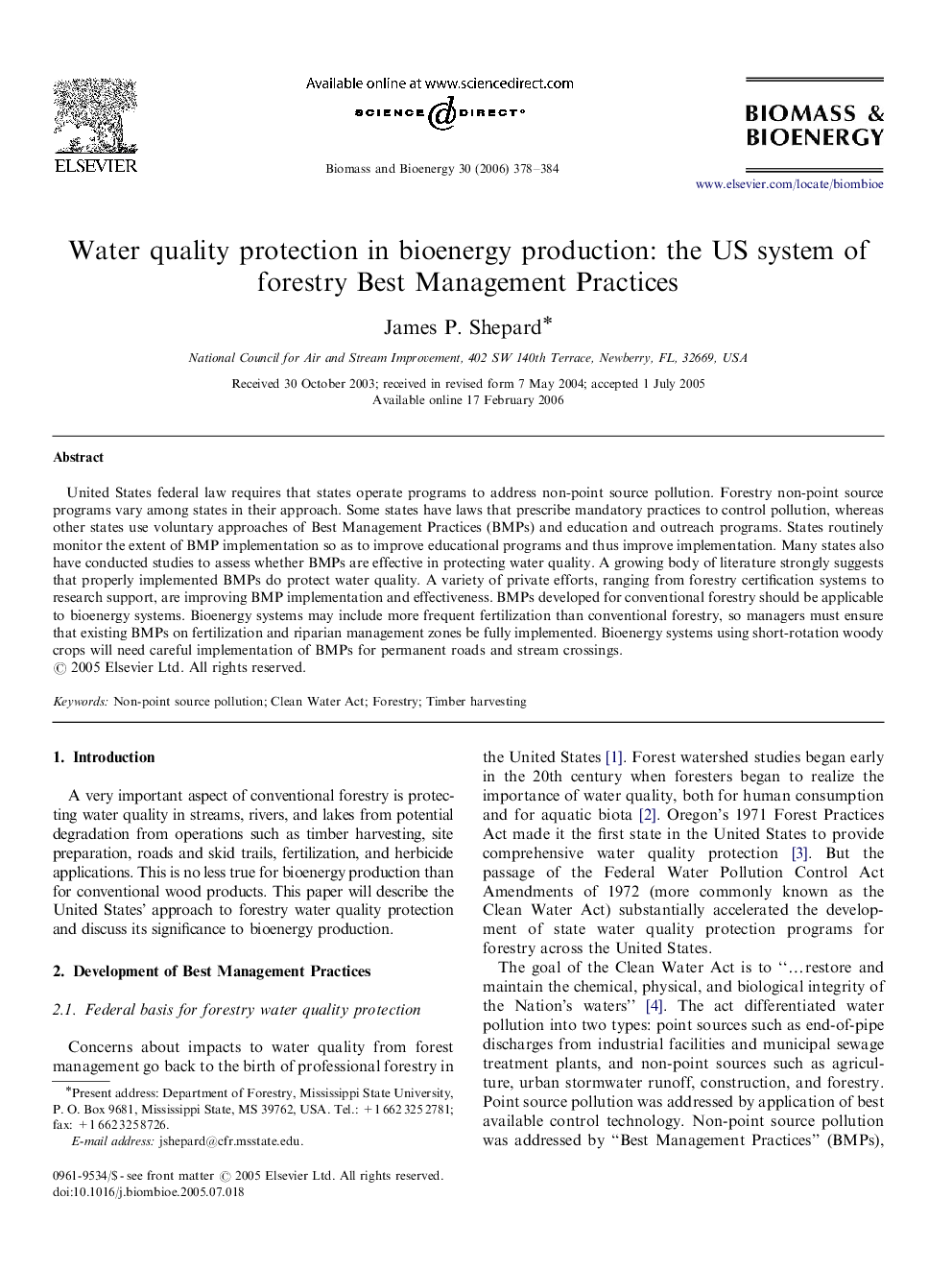| Article ID | Journal | Published Year | Pages | File Type |
|---|---|---|---|---|
| 678962 | Biomass and Bioenergy | 2006 | 7 Pages |
United States federal law requires that states operate programs to address non-point source pollution. Forestry non-point source programs vary among states in their approach. Some states have laws that prescribe mandatory practices to control pollution, whereas other states use voluntary approaches of Best Management Practices (BMPs) and education and outreach programs. States routinely monitor the extent of BMP implementation so as to improve educational programs and thus improve implementation. Many states also have conducted studies to assess whether BMPs are effective in protecting water quality. A growing body of literature strongly suggests that properly implemented BMPs do protect water quality. A variety of private efforts, ranging from forestry certification systems to research support, are improving BMP implementation and effectiveness. BMPs developed for conventional forestry should be applicable to bioenergy systems. Bioenergy systems may include more frequent fertilization than conventional forestry, so managers must ensure that existing BMPs on fertilization and riparian management zones be fully implemented. Bioenergy systems using short-rotation woody crops will need careful implementation of BMPs for permanent roads and stream crossings.
